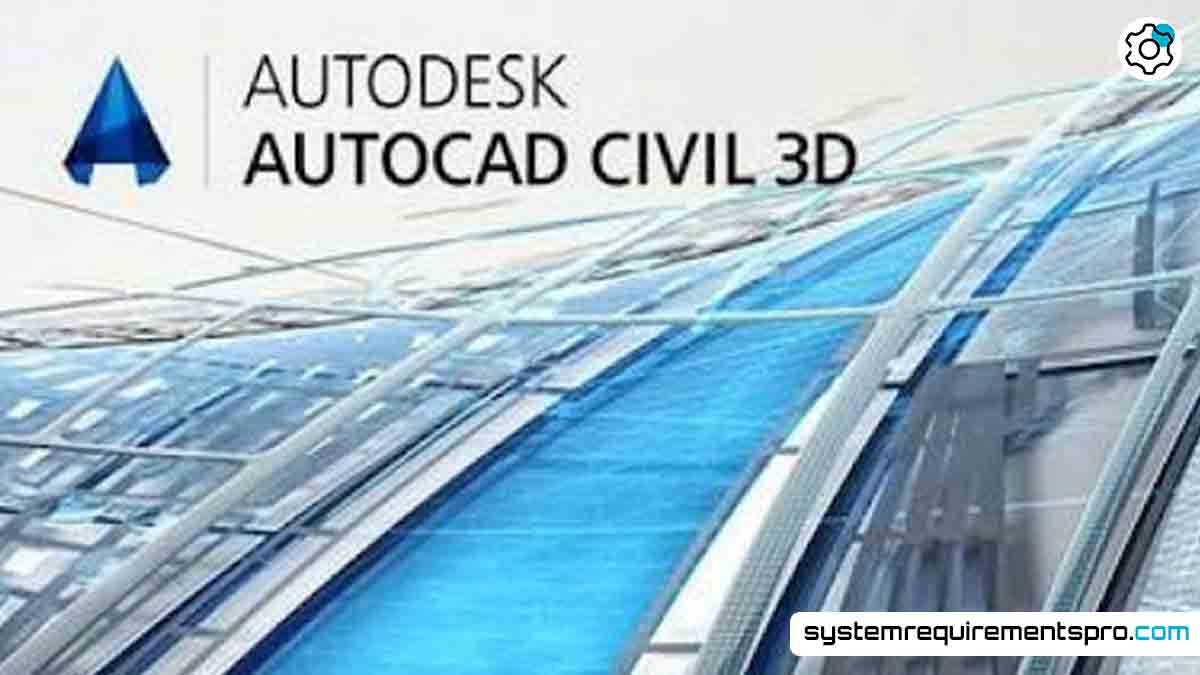For civil engineers, surveyors, and designers, especially, Autodesk AutoCAD Civil 3D is a powerhouse for precisely designing infrastructure projects. Even the most sophisticated program, though, will fail if your system cannot meet its requirements. Understanding the Autodesk AutoCAD Civil 3D system requirements is more than just a technical checkbox; it’s also the key to ensuring seamless processes, low lag, and high output. Whether you’re a seasoned pro or new to the platform, matching your hardware to these requirements can mean the difference between frustration and flawless performance.
Autodesk AutoCAD Civil 3D Minimum System Requirements
Make sure your system satisfies the baseline requirements before starting AutoCAD Civil 3D. Though they are designed for smaller projects or basic tasks, these minimum requirements guarantee the program runs. Here’s what you’ll require:
Minimum Requirements
- Operating System: 64-bit Windows 10 or Windows 11.
- Processor: 2.5–2.9 GHz base clock speed (3+ GHz recommended for complex tasks).
- RAM: 8 GB (16 GB or higher advised for handling large datasets).
- Graphics Card: 1 GB GPU with DirectX 11 support.
- Storage: 15 GB of free space (SSD preferred for faster load times).
- Display: 1920×1080 resolution with True Color.
- Additional Requirements: .NET Framework 4.8 or later.
Although these requirements let the program run, users may find slower performance when handling complex designs or working on multidisciplinary projects.
Autodesk AutoCAD Civil 3D Recommended System Requirements
Investing in hardware that satisfies or surpasses the recommended requirements is crucial for professionals working on significant infrastructure projects or with intricate 3D models. This configuration guarantees perfect multitasking, faster computations, and better rendering:
Recommended Requirements
- Operating System: Windows 11 64-bit or the latest Windows 10 version.
- Processor: 3+ GHz multi-core processor (Intel® i7/i9 or AMD Ryzen 7/9).
- RAM: 32 GB or higher for handling extensive datasets and simulations.
- Graphics Card: 4 GB GPU with DirectX 12 support (NVIDIA Quadro or AMD Radeon Pro).
- Storage: 25 GB of free space on an NVMe SSD.
- Display: 3840×2160 resolution (4K) for detailed visualizations.
- Additional Tools: Multi-monitor setups and cloud storage integration for collaborative workflows.
Meeting these criteria enables users to fully utilize Civil 3D’s capabilities from sophisticated corridor design to dynamic surface modeling.
Autodesk AutoCAD Civil 3D System Requirements PC: Minimum vs. Recommended
Your project scope and performance goals will determine whether minimum or recommended specifications are better for you. Here’s a quick comparison:
| Category | Minimum Requirements | Recommended Requirements |
|---|---|---|
| OS Requirements | Windows 10/11 64-bit | Windows 10/11 64-bit (latest build) |
| Processor Requirements | 2.5 GHz (base) | 3+ GHz multi-core (Intel/AMD) |
| RAM Requirements | 8 GB | 32 GB |
| Graphics Card Requirements | 1 GB, DirectX 11 | 4 GB, DirectX 12 |
| Storage Requirements | 15 GB HDD | 25 GB NVMe SSD |
| Display Requirements | 1920×1080 | 3840×2160 (4K) |
While minimum specifications are sufficient for entry-level tasks, recommended configurations future-proof your investment and help to avoid bottlenecks during resource-intensive operations.
Optimization Tips for Autodesk AutoCAD Civil 3D
Even with good hardware, you can still optimize your system for better performance:
- Update Drivers: Make sure your GPU and CPU drivers are up to date to get performance improvements.
- Close Background Apps: Close unnecessary programs to free up RAM and processing power.
- Use SSDs: Store your project files on SSDs to speed up data access and software load times.
- Customize Graphics: Adjust Civil 3D’s display settings to balance visual quality and speed.
- Optimize Drawing Files: Purge unused elements and use data shortcuts to simplify large drawings.
Conclusion
Modern civil engineering depends critically on Autodesk AutoCAD Civil 3D, but its usefulness depends on the capabilities of your system. You can ensure that the software runs smoothly and enable you to deliver projects effectively by aligning your hardware with the recommended Autodesk AutoCAD Civil 3D system requirements. Giving performance-oriented components top priority will help both productivity and accuracy, whether one is configuring a new workstation or improving an old one.
Frequently Asked Questions
Can I run AutoCAD Civil 3D on a laptop?
Yes, as long as the laptop meets the minimum requirements. For heavy use, get a workstation-grade laptop with a dedicated GPU and plenty of RAM.
Is integrated graphics enough for AutoCAD Civil 3D?
Integrated GPUs can handle 2D drafting but struggle with 3D rendering. A dedicated graphics card is highly recommended.
How much storage do I need for large projects?
15–25 GB is for installation, but allocate more space (500 GB–1 TB) for project files, especially if working with LiDAR or BIM data.
Does Civil 3D use multi-core processors?
Yes. The software uses multi-core CPUs for tasks like surface analysis and volume calculations to speed up processing.
Can I upgrade later if I start with the minimum specs?
Yes, but expect downtime during upgrades. Investing in recommended hardware upfront is more cost-effective in the long run.
We hope that you have found the answer to the system requirements for Autodesk Autocad Civil 3D. Follow System Requirements Pro for more such updates, and bookmark this page to get the latest updates on the system requirements for Autodesk Autocad Civil 3D.

